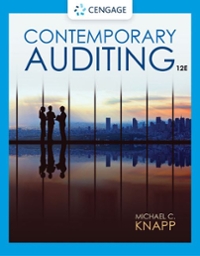Question
When DGL International, a manufacturer of refinery equipment, brought in John Terrill to manage its technical services division, company executives informed him of the urgent
When DGL International, a manufacturer of refinery equipment, brought in John Terrill to manage its technical services division, company executives informed him of the urgent situation. Technical services, with 20 engineers, was the highest-paid, best-educated, and least productive division in the company. The instruction to Terrill: turn it around. Terrill called a meeting of the engineers. He showed great concern for their personal welfare and asked point blank: 'What's the problem? Why can't we produce? Why does this division have such turnover?' Without hesitation, employees launched a hail of complaints. 'I was hired as an engineer, not a pencil pusher', and 'We spend over half our time writing asinine reports in triplicate for top management, and no one reads the reports'.
After a two-hour discussion, Terrill concluded he had to get top management off the engineers' backs. He promised the engineers, 'My job is to stay out of your way so you can do your work, and I'll try to keep top management off your backs, too.' He called for the day's reports and issued an order effective immediately that the originals be turned in daily to his office rather than mailed to headquarters. For three weeks, technical reports piled up on his desk. By month's end, the stack was nearly a meter high. During that time no one called for the reports. When other managers entered his office and saw the stack, they usually asked, 'What's all this?' Terrill answered: 'Technical reports'. No one asked to read them. Finally, at month's end, a secretary from finance called and asked for the monthly travel and expense report. Terrill responded, 'Meet me in the president's office tomorrow morning.'
The next morning the engineers cheered as Terrill walked through the department pushing a cart loaded with the enormous stack of reports. They knew the showdown had come. Terrill entered the CEO's office and placed the stack of reports on his desk. The CEO and the other senior executives looked bewildered. 'This,' Terrill announced, 'is the reason for the lack of productivity in the technical services division. These are the reports you people require every month. The fact that they sat on my desk all month shows that no one reads this material. I suggest that the engineers' time could be used in a more productive manner and that one brief monthly report from my office will satisfy the needs of other departments.'
What leadership style did John Terrill use? What do you think was his primary source of power?
Based on the Hersey-Blanchard model, should Terrill have been less participative? Should he have initiated more task structure for the engineers? Explain?
Step by Step Solution
There are 3 Steps involved in it
Step: 1
John Terrill demonstrates elements of a transformational leadership style He showed concern for the ...
Get Instant Access to Expert-Tailored Solutions
See step-by-step solutions with expert insights and AI powered tools for academic success
Step: 2

Step: 3

Ace Your Homework with AI
Get the answers you need in no time with our AI-driven, step-by-step assistance
Get Started


